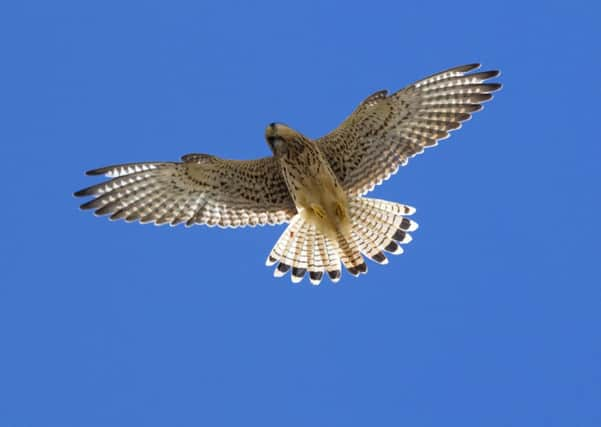Scottish kestrel numbers in rapid decline


Numbers of the raptors have plummeted by two thirds in under 20 years, according to the latest annual Breeding Bird Survey from the conservation charity RSPB.
Early research suggests intensification of farming could be partly to blame, with changing agricultural practises affecting populations of smaller creatures the birds feed on.
Advertisement
Hide AdAdvertisement
Hide AdClimate change, competition for nest sites and a rise in the use of some rat poisons are other possible causes.
RSPB Scotland, which has already launched its own investigations, says more studies must be done to understand the drivers of this steep decline before it’s too late.
“It’s really sad to see kestrels suffering such large drops in numbers in recent years,” said Staffan Roos, senior conservation scientist for the charity.
“Research into what is causing the decline is vital because once we know what factors are having an impact we can offer advice on how to increase the populations of this charismatic bird of prey.”
Kestrels are the most common bird of prey in Europe. In 1995 there were roughly 10,000 breeding pairs in Scotland which dropped to about 4,500 in 2013.
This the sharpest decline seen in any of the monitored bird species across the country.
In comparison, across the whole of Great Britain in 1995 there were roughly 40,000 breeding pairs and in 2013 that number had only fallen to between 30,000 and 35,000.
Nearly 500 Scottish sites were studied as part of the 2013 survey, which was carried out by more than 2,800 volunteers across the UK.
Kestrels were sighted in only around 35 of them.
Advertisement
Hide AdAdvertisement
Hide AdThe distinctive birds of prey, which belong to the falcon family, do not build their own nests.
But they are very adaptable, often taking over nests abandoned by other birds or using ledges on cliffs and buildings.
They readily accept nestboxes and often return to the same site for decades.
Egg-laying is dependent on the weather and plentiful food supplies, so many kestrels fail to nest in years when prey is scarce.
In autumn the bird adjust their territories to account for winter feeding.
Initial studies conducted by the RSPB Centre for Conservation Science suggest intensification of agriculture could be the main driver for the continuing downward spiral in populations.
Preliminary results suggest plunges in numbers have coincided with switches from spring-sown barley to autumn-sown wheat and oil seed rape.
This change in farming practice means there is less food available in winter for animals such as voles and seed-eating songbirds, which in turn impacts on predators including kestrels.
Advertisement
Hide AdAdvertisement
Hide AdOther factors are also being investigated, including global warming, increased use of second-generation poisons that kill kestrels if they eat affected rodents, and attacks by larger birds such as goshawks and peregrines.
Mr Roos said it was crucial to understand the root causes so that action can be taken to reverse the trend.
“For example, we can speak with farmers about increasing field margins to boost vole numbers, which would give kestrels a more abundant food source,” he said.
“We are already supporting practical steps that we believe will help us to understand the population decline better.
“We support the Scottish Raptor Monitoring Scheme, which recently has increased the monitoring of kestrels and ringing of kestrel chicks throughout Scotland. This will provide useful information on the survival and movements of kestrels.
“We also provide nest boxes, including on some of our reserves, to reduce the risk of competition for suitable nest sites.”